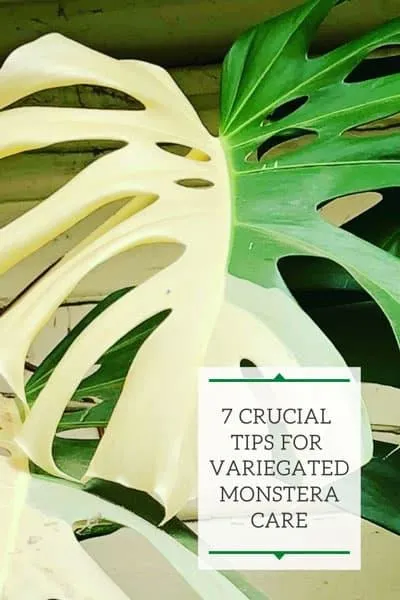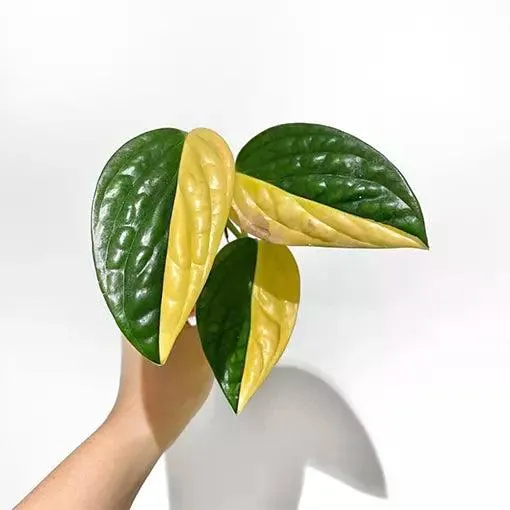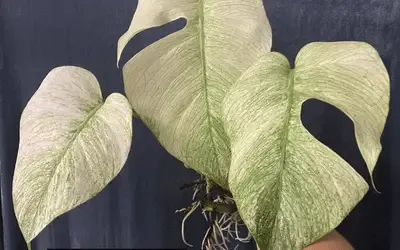Everything You Need to Know About the Yellow Variegated Monstera Plant
The yellow variegated monstera is a stunning houseplant variety known for its bold coloring and tropical appearance. As an exotic beauty with unique foliage, it’s no wonder this plant captivates plant lovers. However, growing a yellow variegated monstera comes with some challenges compared to the plain green cultivar. In this in-depth guide, I’ll reveal everything you need to know about caring for this showstopping plant so you can enjoy it for years to come.
What Makes It Different?
Compared to the common green monstera deliciosa, the yellow variegated form has leaves patterned with bright yellow sections. The vibrant yellow patches stand out beautifully against the green areas of the leaf. This coloration is caused by a genetic mutation known as variegation. While most houseplants have uniformly green leaves, variegated plants lack chlorophyll in some tissue, producing dazzling patterns.
The precise placement and size of yellow spots can vary between individual plants. On some specimens, the yellow covers half the leaf while others only have faint flecks. This unpredictable variegation is part of what makes each plant so visually striking. Another key difference is that yellow variegated monstera grow much slower than their green cousins.
Caring for the Unique Needs of a Variegated Plant
Due to missing chlorophyll genes, variegated plants require extra TLC. The yellow sections can’t photosynthesize effectively, so the plant grows more slowly. It also becomes stressed more readily. Here are some tips for successful variegated monstera care:
- Bright, indirect light is best to avoid sunburn on yellow parts. Too much direct sun will scorch the leaves.
- Water just enough to keep soil slightly moist, not soggy wet. The weakened plant is prone to root rot if overwatered.
- Fertilize monthly in spring and summer with a dilute, balanced houseplant food.
- Mist leaves to boost humidity around 40-60%. The tropical plant appreciates humid indoor air.
- Prune off entirely green shoots that form, as these won’t keep the variegated pattern you want.
Dealing with Chlorosis and Reversion
Two issues commonly affect variegated monstera—chlorosis and reversion. Chlorosis causes the yellow sections to turn pale or translucent white from insufficient chlorophyll. This is often due to inadequate light levels. To remedy chlorosis, boost sunlight gradually to bring back the bright coloring.

Plants also have a tendency toward genetic reversion, where new growth arises as plain green without variegation. This can happen anytime but stresses increase the risk. To maintain the prized yellow pattern, remove any fully green shoots at the soil line. Continuous propagation from variegated cuttings is needed to keep the mutation stable.
From my experiences growing variegated plants, reversion can be discouraging. But with diligent care and patience, the spectacular variegation usually returns over time.
Dealing with Pests
Similar to other houseplants, yellow variegated monstera are occasionally prone to pests that can cause severe damage. The top three to watch out for include:
- Mealybugs: these cotton-like insects feed on and weaken plants. Look for fluffy masses in leaf joints and treat promptly with neem oil.
- Spider mites: tiny spider-like creatures spread webs on leaves and stems. Leaves may appear stippling or yellowing—wipe down regularly with water to control.
- Fungus gnats: adult flies hover around drainage holes, and larvae feed on soil and roots. Use sticky traps near pots and add fungicide such as cinnamon to stop infestations.
Since a variegated monstera heals slowly from damage, preventing and eradicating pests right away is key. Regular inspections let you catch issues in early stages for best success. Isolate any infested plants until totally pest-free.
Propagation and Showing Variegation to Future Generations
To appreciate this plant long-term, propagating cuttings allows making more plants to keep the prized variegation going. Take stem cuttings that have at least two visible nodes and are at least four inches long. Remove lower leaves and insert cut end directly into well-draining potting mix. Keep cuttings in bright, warm conditions with high humidity until roots form, typically 4-6 weeks. New growth should mirror the parent plant’s variegation.

Be prepared for only 50% of cuttings to develop true variegation, as the mutation isn’t a guaranteed trait passed down. Yet variegated offspring let you share the gorgeous foliage with plant-loving friends and family for years of enjoyment.
Dealing with the High Demand and Cost
Yellow variegated monstera are so striking they’ve become highly coveted collector’s items. On the open market, an established plant easily sells for hundreds or even thousands of dollars. For most people, settling for a tiny two-leaf cutting at a comparable cost seems unreasonable. However, with patience and dedication to proper care, your small investment can transform into a sizable plant bringing you beauty for years.
Alternatively, seek more affordable options like frequenting local plant sales for potential variegated shoots or clippings available at lower prices. Building connections within the plant community sometimes leads to generous donations or trades as well. While the yellow monstera craze continues, determined gardeners can still attain this prized plant without bankrupting themselves through strategic efforts.
In Summary
The stunning yellow variegated monstera is a true showstopper among houseplants. With a bit more skill and diligence, this unique cultivar’s unique needs can be successfully met at home. Though not as carefree as the regular monstera, the thrill of its exquisite foliage makes maintaining its special conditions worthwhile. By understanding potential issues upfront and giving yours the TLC it requires, you’ll be rewarded with a true conversation piece for your indoor jungle for years to come.
I hope this comprehensive guide has answered all your questions about growing and enjoying this amazing variegated monstera plant! Feel free to let me know if you have any other queries. Wishing you the best of luck keeping your amazing plant healthy and happy for many years to come.

“Factors to Consider When Choosing a Yellow Variegated Monstera”
| Variegation Pattern | Look for solid white or yellow variegation bands rather than speckles for a more dramatic appearance. |
|---|---|
| Leaf Size | Larger, fuller leaves will add more impact but may be harder to care for than a plant with smaller leaves. |
| Plant Maturity | A more established plant with an evident vine and multiple stems will be hardier than a younger single stem plant. |
| Price | Expect to pay more for a large specimen plant versus a smaller starter plant. |
| Light Requirements | Yellow variegated monsteras need very bright, indirect light to maintain their coloration without burning. |
| Water Needs | Allow the soil to dry slightly between waterings and use filtered water if possible to avoid mineral build up on the leaves. |
| Pest and Disease susceptibility | Inspect for signs of pests like spider mites or mealy bugs which can impact variegated plants more severely. |
FAQ
-
What kind of plant is a yellow variegated monstera?
The yellow variegated monstera is basically a tropical plant from the Araceae family. It’s sort of like a fancy monster deliciosa with cool yellow and green stripes on its big leaves.
-
Where does it grow naturally?
These neat plants come from tropical rainforests in Central and South America. They hang out in the trees and use other plants to climb up towards the sunlight, I guess sort of like a plant jungle gym!
-
How do you care for a variegated monstera?
They need warm temperatures and high humidity to thrive. Keep the soil moist but not soaked. Bright, indirect light is best – too much sun may bleach the leaves. Apparently “Dr. Houseplant” says they’re pretty tough as long as you water them enough.
-
Will the yellow variegation continue as the plant grows?
Sometimes newer growth will become more or less variegated than the original leaves. The pattern may amazingly remain very consistent, but other specimens can kind of lose their cool stripes over time. Only one way to find out for your plant!
-
How fast do they grow?
These beauties can grow fairly quickly if conditions are perfect. You may see a new leaf unfurling every few weeks during the warm season. However, their growth depends on lots of factors so yours may grow more slow or steady. Don’t worry if it’s not exploding, as long they’re happy who cares how fast it goes?

-
Is the variegated monstera more difficult to care for?
Some sources say variegated plants need a little more TLC since the white or yellow parts can’t photosynthesize. But maybe it’s not that huge of a deal if you give it the same care as a regular monstera. As long as the soil is moist and it gets decent light, this beauty should thrive with just average green thumb skills.
-
Are variegated monsteras more expensive?
Sadly yeah, the rarer variegated forms generally cost more bucks. The supply is lower since variegation happens randomly. But keep your eyes peeled – you might get lucky and find a deal! It’s definitely a stunning conversation starter even if the price is pumped up.
